My Quest for the Perfect Polar Bear Picture
![]()
I’ve been saying it for years; all the easy pictures have been taken. But there are still some stupid and crazy ones left out there. I came up with the bright idea to travel north with at least one of them in mind. I went looking for the polar bear of my dreams.
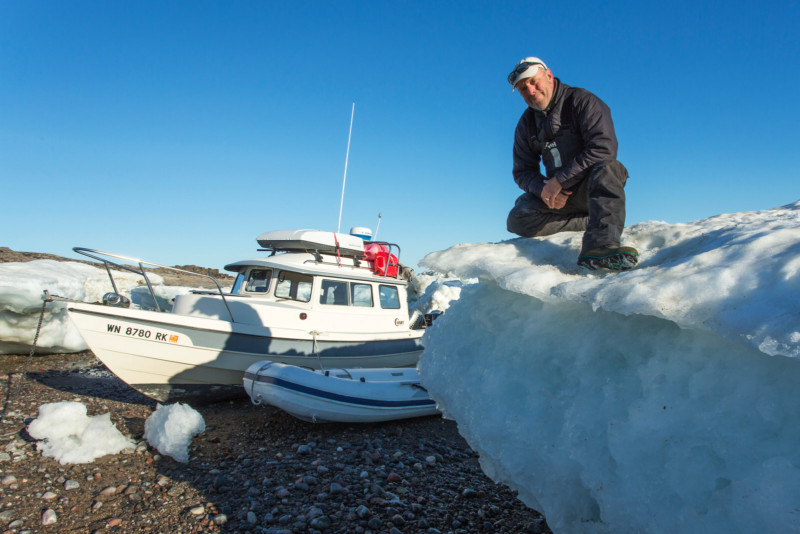
I’d been making noise for years about going up to Hudson Bay to photograph polar bears. The town of Churchill, Manitoba is one of the easiest and most accessible places to see the bears. But everyone and their dog has already been there, riding around in a Tundra Buggy to photograph bears. I didn’t see much point in spending thousands of dollars to do that, so I tried to come up with a plan to get there and explore on my own.
My idea led to a string of solitary northern journeys that began as a sort of lark: I wondered if could I step out my front door in Seattle and travel overland to the shores of a cold and mysterious sea, then head off by boat to see wild animals and have some adventures. As to whether any of this was possible, let alone wise, safe or remotely advisable, I never thought to ask.
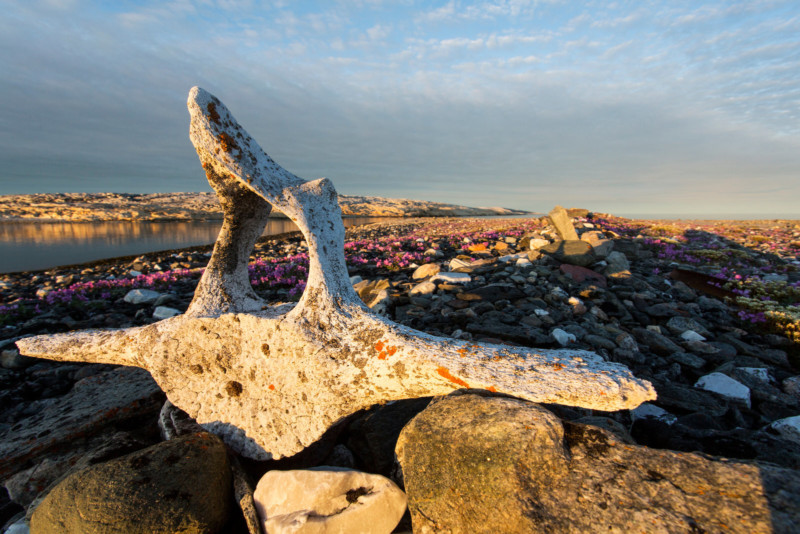
I wanted to go solo, and I figured out pretty quick this was going to be a BYOB (bring your own boat) job. The funny thing is, at the time at least, I hated boats. I hated the smell of them. I hated the cloying dampness, the sea-sickening bobbing-cork lurch, the musty, cramped spaces and the uncanny correlation between time on the high seas and extreme personality disorder.
After I bought my first boat, a 22-foot long weekend fishing boat named, appropriately enough, C-Sick, I quickly learned that boating exists in a gray zone between life as an unemployed grad school dropout and formally joining the ranks of the homeless. I might not bathe for a week. I crapped in a bucket, slept on a fold-out sofa, drank alone and to excess, and compulsively talked to myself for months on end. She was small enough—eight-and-a-half feet wide, and twenty-two feet long—to haul on a trailer, but came equipped with a rudimentary bed, table, and kitchen. She reminded me of my old VW camper.
I eventually decided to haul C-Sick nearly 2,000 miles on her trailer, up to where the road ends in the middle of Canada’s north woods near a town called Gillam, Manitoba. Then I backed her into the Nelson River and motored 75 miles downriver to Hudson Bay. From there, the plan was to make a left turn, motor across nearly a thousand miles of sparsely inhabited coast, and arrive at the Arctic Circle.
On paper, it sounded pretty simple, but the reality was anything but. I hadn’t gone more than four or five hours before I grounded my boat in the river’s shallows. I wound up unloading half a ton of fuel and gear into my inflatable dinghy, then pushed and dragged her while wading in the ice cold water. After that, I spent weeks struggling to cover the rocky and wild coast of western Hudson Bay.
There are only six small towns and settlements scattered across more than 500 miles of coastline, and I had to carry ample fuel and food to keep moving for hundreds of miles on my own. Each night, I had to find a sheltered spot to anchor the boat, then I’d heat up some canned soup, download the day’s images and start scribbling in my journal about the day’s adventures and disasters.
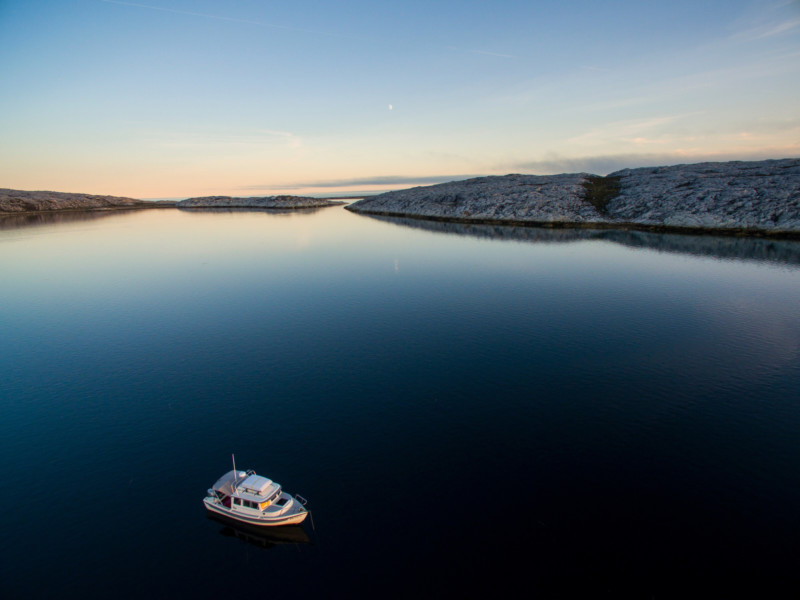
I wish I could say I was the Bear Whisperer, that I possessed a secret communion with polar bears—some Zen mastery that allowed me to see the bear even before I saw the bear. Or that I could send a whisper out upon the wind, carried from my chapped lips to fuzzy ursine ears. If there is a secret to finding a white bear in an infinite field of white ice, nobody has shared it with me.
I heard a helicopter and a suitcase full of National Geographic cash helps. Out on the water and amidst the drifting ice, it was simply a matter of grim determination: scanning every stinking piece of ice for hour after hour with heavy, overpriced binoculars glued to my eye sockets. Most of the time; nothing.
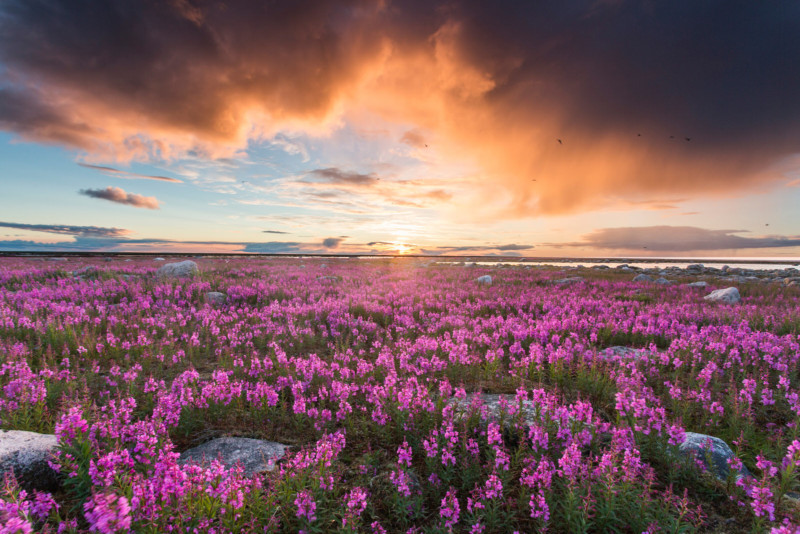
And even when I did find a bear, it was often difficult to get close enough to photograph them properly. It was nearly three weeks until I found my first polar bear, asleep on the rocky shore. I set up as close as I could get, then waited. It might have been an hour before the bear finally woke, yawned, and had a luxurious stretch on the rocks. Then he sat up and began walking toward me.
It was not a fast walk, but it wasn’t exactly a slow one, either. And he was not at all deterred by any of the array of gentle persuasions I had learned in three summers of working around Alaska’s coastal grizzly bears. I could have waved my hands overhead and yelled “Hey, Bear,” until my arms fell off; this guy was having none of it.
I clutched my bear-banger pen and carefully began a backward stumble-walk over the wet and uneven rocks, never turning to let the bear out of my sight. I retraced my steps back toward the dinghy, struggling to feel my way over the rocks through thick rubber boots and barely noticed the half gallon of cold water spilling over my boot tops when I finally scrambled back aboard.
Over the course of four summers, I photographed dozens of polar bears and a host of other animals near the Arctic Circle, at the northern reaches of Hudson Bay. I spent endless hours watching the bears as they moved along the melting sea ice and on shore.
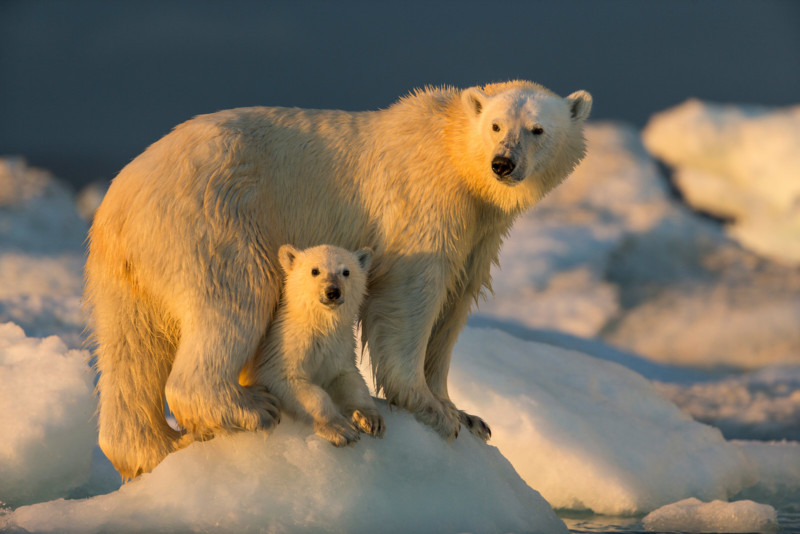
There were times when the bears relaxed completely, and I was able to show them staring through the boat’s window at me, or swimming through the water, hunting on the ice.
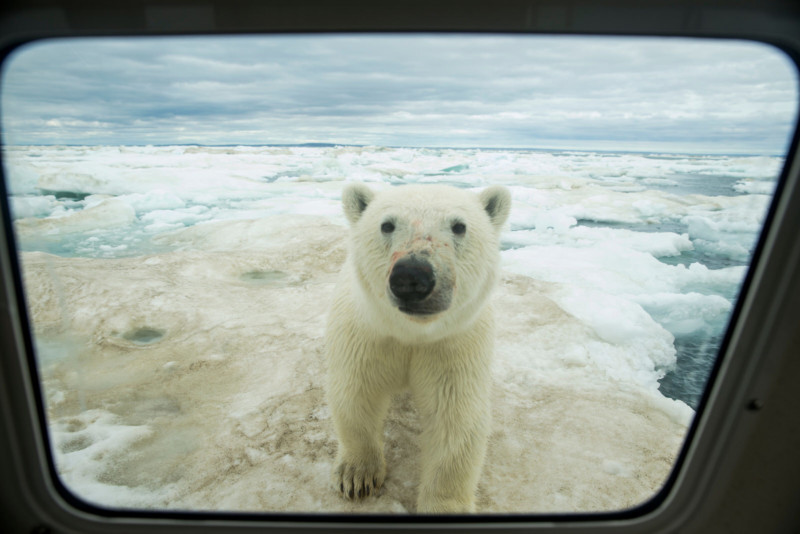
There were also a few times when they took a more active, even culinary interest in my presence, which was another matter entirely. But the funny thing is, the bears didn’t scare me half as much as the Bay did. The Bay itself might be better described as a vast inland sea, six hundred miles long and up to four hundred miles across. When the wind blew, there wasn’t a tree or hill in half a thousand miles to stop it. The coast is only poorly mapped, and I constantly struggled to keep C-Sick off the rocks and out of the ice.
I gave my poor wife a heart attack one day when I left one of those ‘lost climber on Everest bidding sad farewell’ messages on her voicemail. The pack ice is constantly drifting on the currents and tides up near the Arctic Circle, and when I found myself cut off by a wall of icebergs, I drove C-Sick onto the rocky shore to avoid being trapped or crushed.
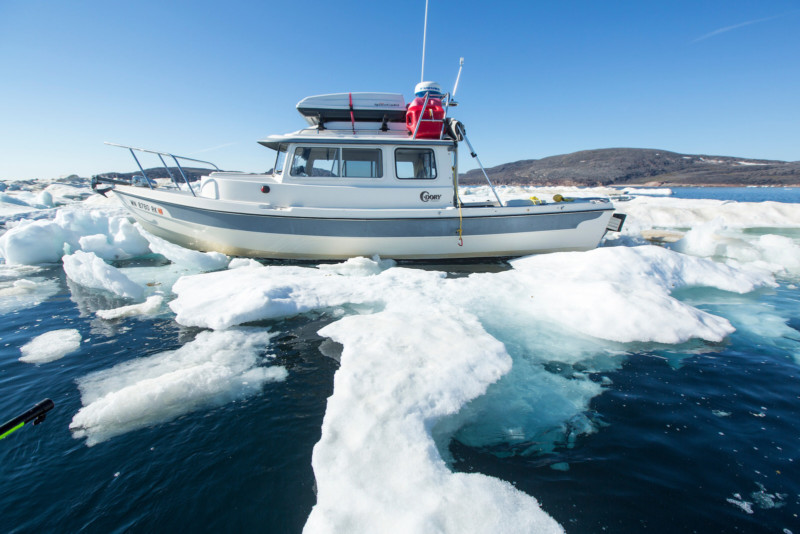
I couldn’t think of what else to do, so I called her on my satellite phone, gave her my GPS coordinates, then asked if she could look up the numbers for the boat insurance policy. It took 10 or 12 hours, but the tide eventually loosened up the ice and I floated back off the beach and away to safety.
I wanted to show polar bears in a new way, and I was willing to try almost anything. Along with a couple cases of my dinged-up Canon SLRs and attendant long telephotos, I brought along remote camera traps, an Aqua-Tech underwater camera housing, even a DJI Phantom 3 drone that seemed obsessed with thoughts of suicide.
In the end, I shot more than 100,000 images and covered more than 6,000 miles of wandering across the northern Bay. And some of those photographs did generate a modest amount of notoriety, including a first place award at the BBC Wildlife Photographer of the Year competition in 2013, Grand Prize in the National Geographic Photo of the Year contest in 2013 and a First Prize in the 2014 Big Picture Competition.
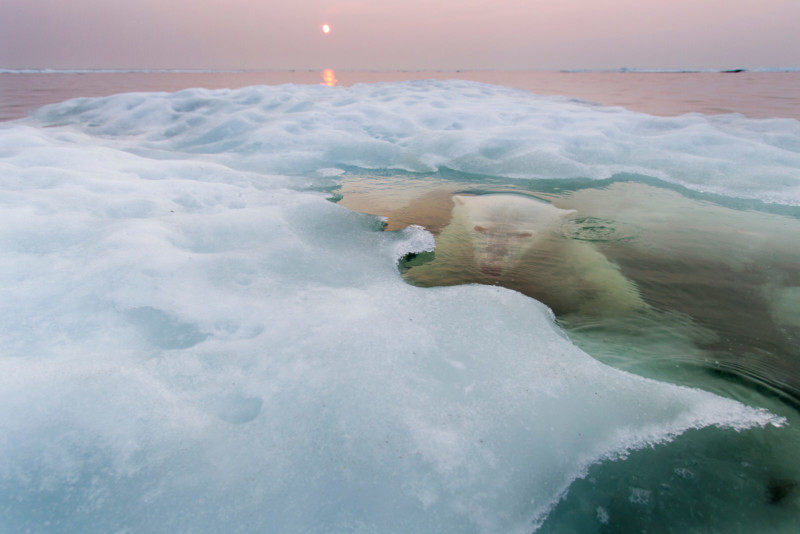
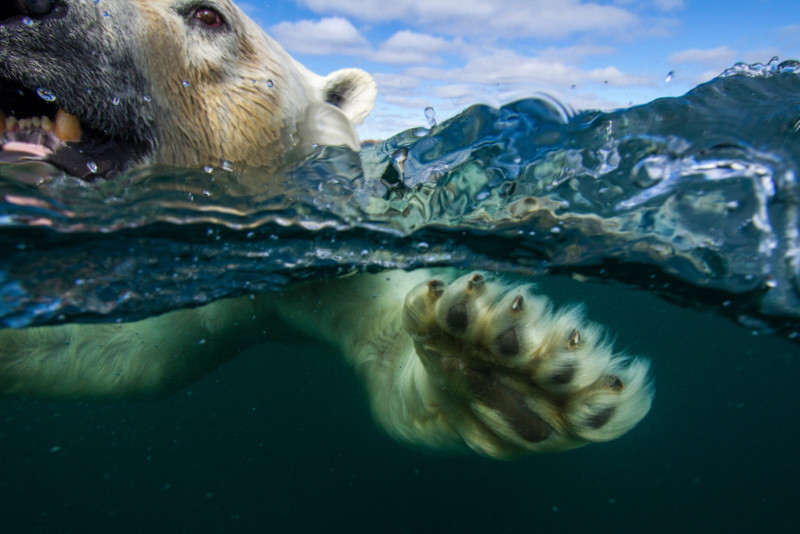

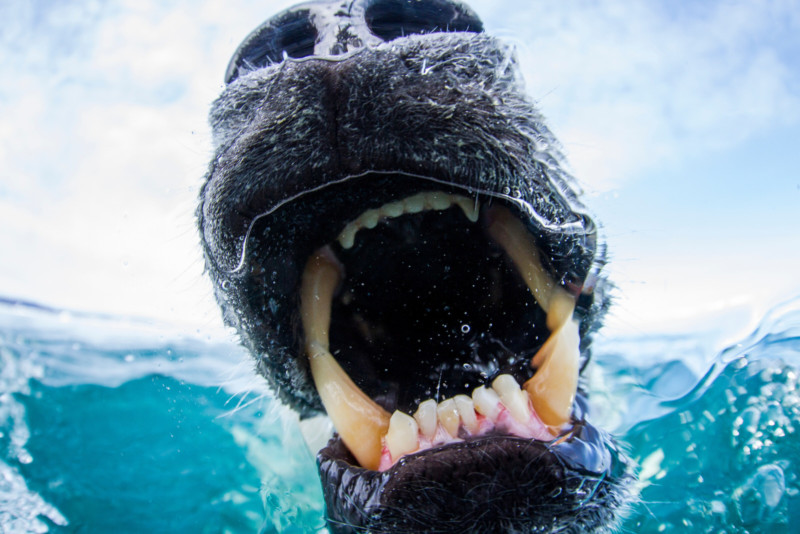
I never set out to write a book. Arctic Solitaire: A Boat, A Bay, and the Quest for the Perfect Bear has its origins in the journals and notes I kept during those four summers between 2012 and 2015. It was the voice in my head, scribbled down longhand at the end of each day’s solitary travels. I turned some of them into posts for my blog, which caught the eye of Mountaineers Books here in Seattle. They offered me a book contract, a small advance, and a chance to try something entirely new; staying home and writing for months at a stretch.
For a guy who had spent the past 15 years traveling five or six months a year, it was a big change, but a welcome one. The writing forced me to use a whole different set of muscles, and made me think in new ways about photography and bearing witness to the world, as well as allowing me to explore the history of the places I’d visited.
![]()
I’m already thinking about my next expedition project. I sold my beloved C-Sick to a nice man who seemed less inclined to drag her back to the ice, after buying a 43-foot steel motorsailer in Nova Scotia sight unseen, on the Internet. I took her north during the summer of 2017, covering more than 3,000 miles, from Halifax to Newfoundland and on to the northern tip of Labrador. Next summer, I hope to take her further north still.
About the author: Paul Souders is a photographer who travels the world for photos. The opinions expressed in this article are solely those of the author. You can find more of his work on his website and find out more about his book here.